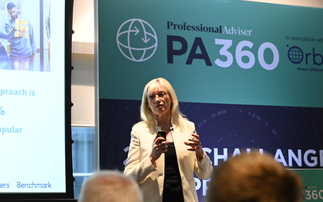
Nailing this part of the Consumer Duty is going to be key to delivering and demonstrating value to your clients going forward. But how exactly do you put the building blocks in place to demonstrate that your products and services are aligned with your clients' needs at a cohort level?
What's required?
For those advice firms who have implemented robust PROD processes, meeting this particular outcome should be straightforward because you'll have already thought about your target markets. But the PROD rules have been in place for over five years now, yet recent research from Next Wealth highlighted that 40% of advice firms[1] still don't have defined target markets. So perhaps there's still a bit of work to do in this area.
The products and services outcome involves creating identifiable target markets that put your clients' needs front and centre. From there, it's about proving that the products and services you provide to your clients align to those needs and ultimately provide fair value.
Defining target markets
When it comes to creating target markets, it's good to remind ourselves about the actual requirement here. For this, I'd signpost the importance of PROD 3.3.12:
The target market identified by distributors for each financial instrument should be identified at a sufficiently granular level.
What exactly does this mean? Well, it isn't about individual suitability, nor does it replace the need for individual suitability. It's about suitability at broad cohort levels to ensure clients are in the right products (with the right services) at the right time. A ‘granular level' is needed to drill into the collective needs and characteristics of each cohort group, or target market.
That might sound rather vague, but this vagueness actually presents a number of opportunities because there are lots of ways to create target markets that can be tailored to the nature of your own clients' needs.
I've spoken to many different advice firms about how they've done this and it doesn't necessarily mean implementing additional processes - in many cases, it's been tweaks to existing advice processes and focussing on the transparency of decision making.
Choosing an approach
Creating target markets based on life stages has been one popular approach by firms over recent years and is a straightforward way of doing so. The beauty of this approach is that it allows you to capture key life events and consider the type of things which are important to individuals throughout the different stages of life before highlighting how products and services will differ across the different stages. Clearly, the needs of individuals in later life will be very different to those starting out, and products and services should reflect those different needs. It also allows you to perhaps re-think traditional client boxes, like segmenting by assets under management and placing more prominence on what's important to your clients.
I've also heard of firms integrating sustainability preferences within their target markets. The sustainable finance regulatory agenda is certainly gathering momentum and I'd argue that explicitly incorporating sustainability considerations within your existing processes is the only way to demonstrate that your products and services are fit for purpose for those clients with preferences in this area. A simple way to start may be splitting clients into broad buckets based on their preferences and then thinking about what type of responsible investment approach would be more relevant. For example, clients who believe that sustainability is one of the most important factors within the investment decision making process are likely to favour sustainable investment strategies relative to those clients who view ESG integration techniques as a means to enhance risk adjusted returns. All of this would then come before assessing individual suitability and product selection, but it shows you're building out from client needs.
Target markets based on occupation is another example I've heard firms adopt with the most extreme example being based on different sub-segments of farmers. I'm not going to delve into the types of products and services which are appropriate for different segments of farmers, but I do think this just proves that there's no wrong or right way of doing this and it can be tailored to the nature of your own clients. You just need to evidence you have a structured client-centric process in place to deliver tailored advice, products and services to each of your target markets.
In summary
Getting all of this documented will then help you articulate the value of the products and services you provide to your clients and help evidence how you deliver good customer outcomes. In that respect, these building blocks are the foundation for delivering value.
To access support for all of the Consumer Duty's outcomes, including Product and Service, visit the Royal London Consumer Duty hub.
[1] NextWealth, Consumer Duty: Implications for the retail wealth management supply chain, November 2022










